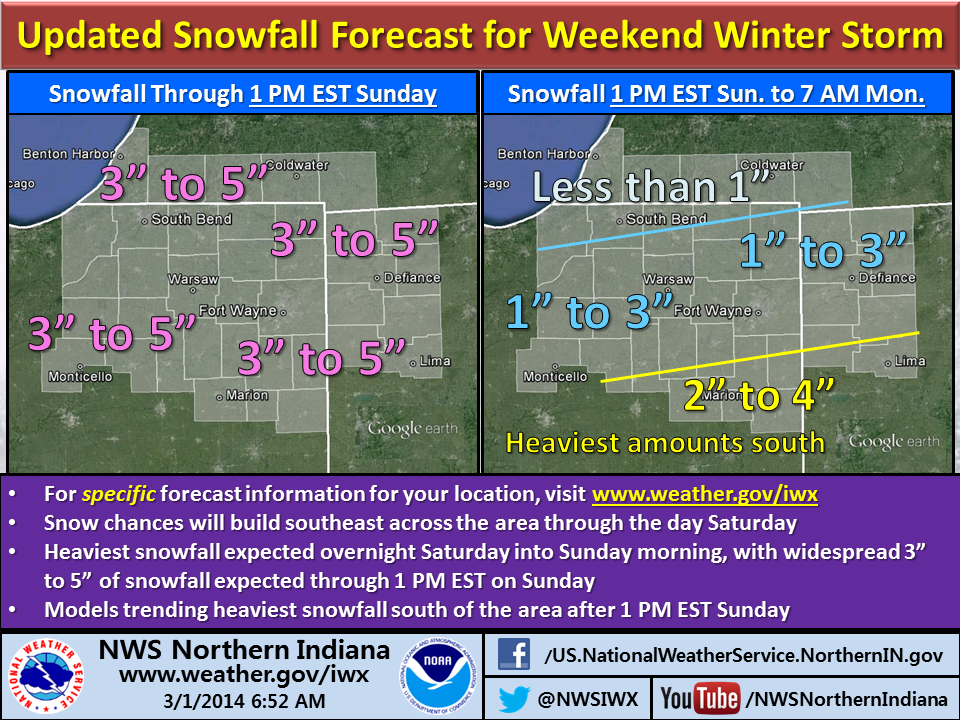The net control station (NCS) team for the IMO SKYWARN Quadrant Two Net on 146.88 MHz has made some slight operational changes as we enter the 2014 severe weather season.
The main change affects when directed SKYWARN nets will begin. Effective immediately, a directed net will begin any time a tornado warning is issued for any part of Allen County, Ind. In addition, if a liaison from a county SKYWARN net requests a directed quadrant net, a directed net will begin. Finally, SKYWARN NCS have the authority to begin a directed net at any time they deem it necessary. In general, an NCS will begin a directed net anytime the amount of spotter traffic or expected traffic warrants disrupting normal repeater operation.
 |
| IMO SKYWARN quadrant map. Counties in quadrant two (green) may relay reports via the quadrant two net on the 146.88 MHz repeater in Fort Wayne.The “IWX” in northeastern Kosciusko County represents the approximate location of the northern Indiana NWS weather forecast office. |
Please remember that when a directed net is in session, all stations are requested to refrain from transmitting on the frequency except when they have observed something that meets National Weather Service (NWS) reporting criteria (or when the NCS requests information from them). During a directed net, stations should not transmit information obtained from broadcasters, announce the activation of sirens, etc. as such transmissions are not first-hand reports that meet NWS criteria.
Because of the second minor change in procedures, stations should not plan to use the SKYWARN net as a primary means of obtaining information from the NWS (e.g. warnings, special weather statements, etc.). With today’s technology, even spotters in the field have multiple other means of receiving such information, including portable NOAA weather radios (or amateur radios tuned to the NOAA frequency), broadcast radios, mobile Internet connections and smartphone apps. For this reason and to keep the frequency as clear as possible for spotter reports, net control stations will now severely limit the reading of NWS products on the air, especially during directed nets. Expect, for example, to hear little more than, “A severe thunderstorm warning has been issued for northern Allen County, Indiana.” If you want the details, such as storm location and movement, obtain them via other means. If you haven’t been paying attention to the frequency and want to know why you’re hearing sirens, turn to broadcast or Internet sources, rather than requesting such information during a directed SKYWARN net.
Of course, when SKYWARN is in standby mode, all stations are welcome to transmit at any time and for any purpose, as long as they keep transmissions short and leave long gaps between transmissions so a spotter can easily break in.
Download an updated copy of the quadrant two net operations manual.The manual gives more details regarding the directed net and standby modes, including the preferred way to check in with reports.
Remember that in the past year, the 146.88 MHz repeater was unreliable (mostly when the weather was warm). As in the past, should the repeater develop problems during a SKYWARN operation, SKWYARN will switch to the 146.76 MHz repeater.
Like this:
Like Loading...










